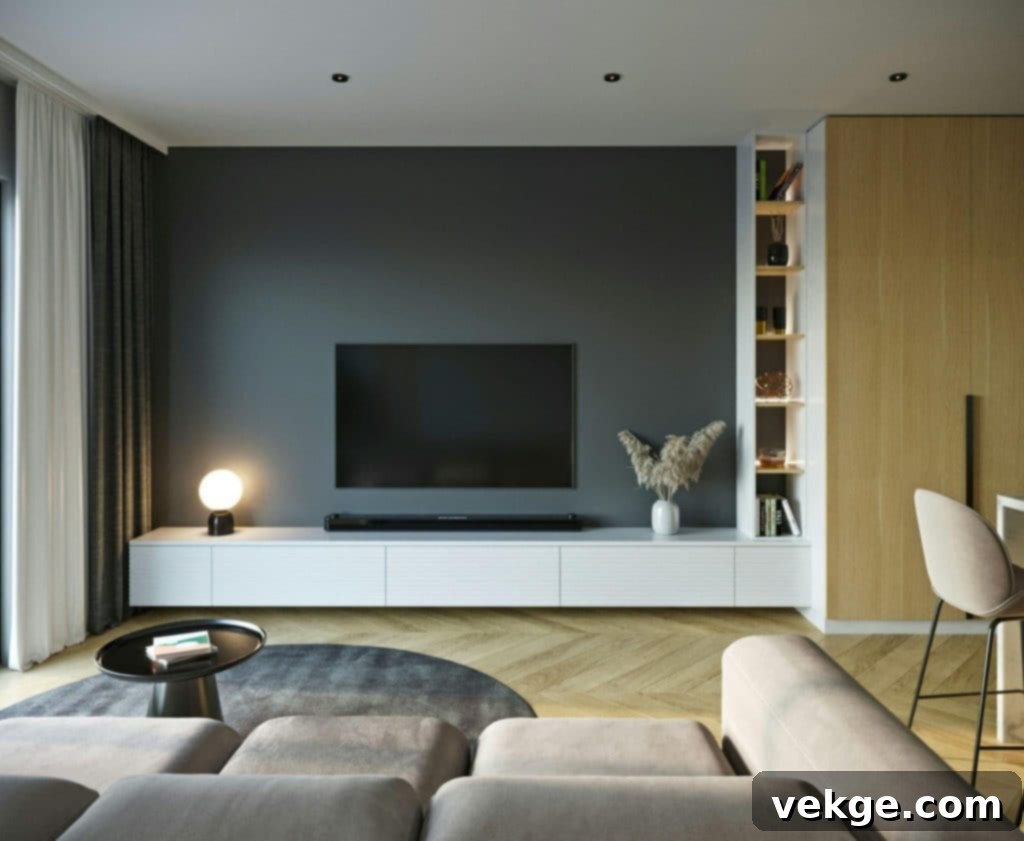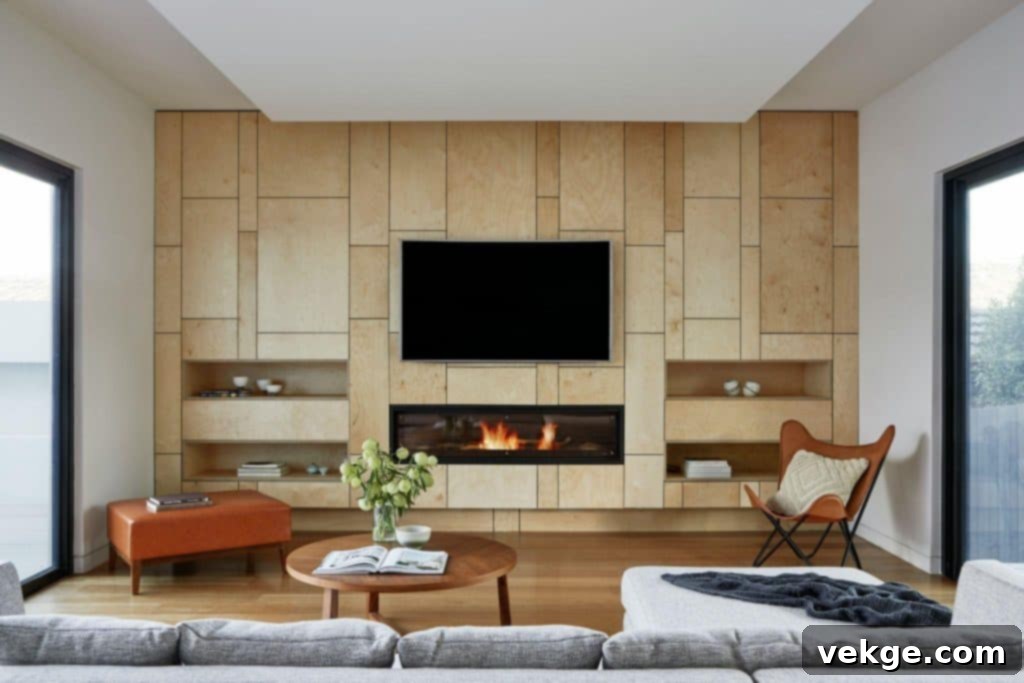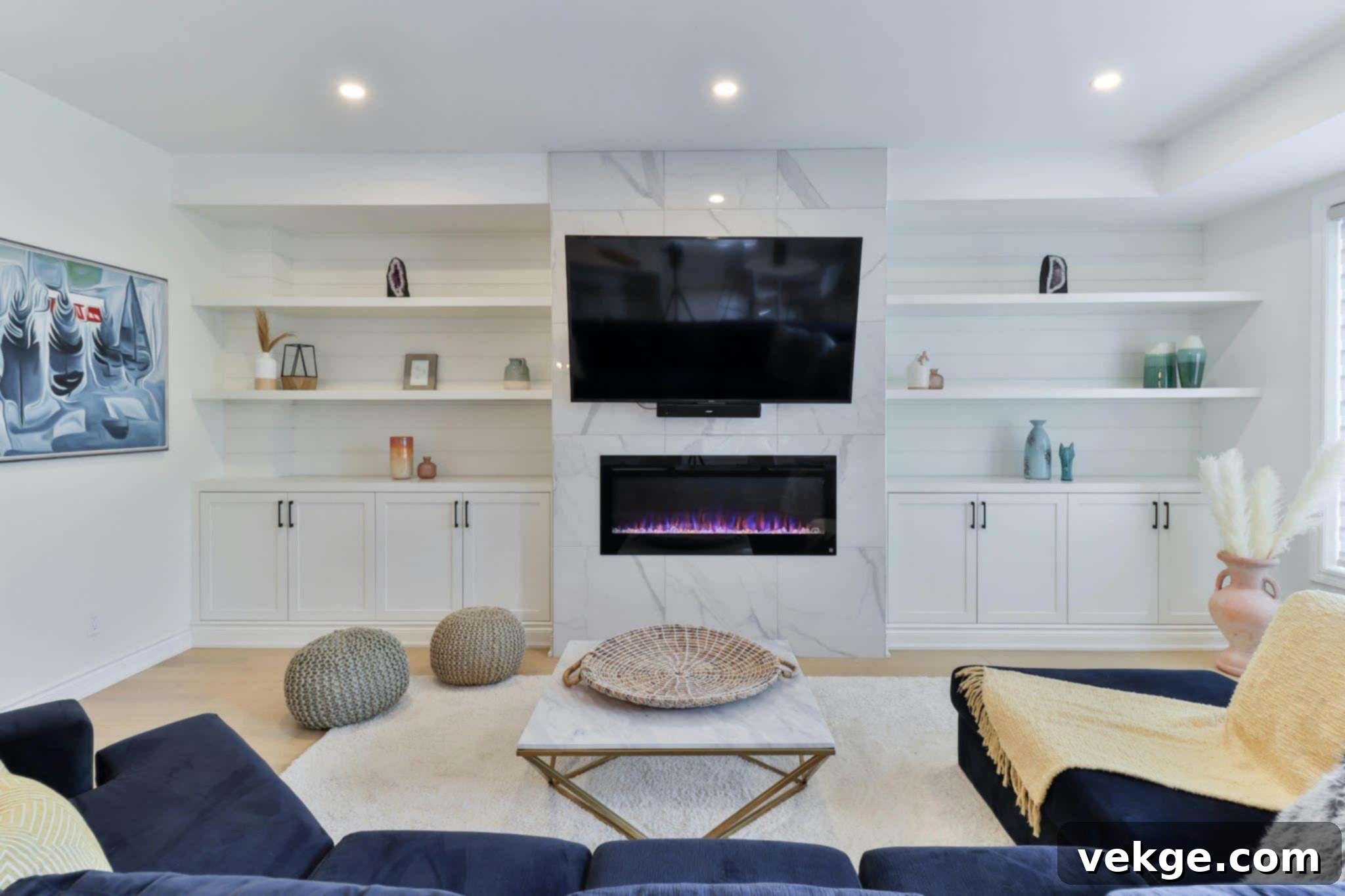Transform Your Living Space: Innovative Entertainment Center Design Ideas for Modern Homes
In today’s homes, the entertainment center is far more than just a place to put your television. It often serves as the focal point of the living room, a hub for family gatherings, and a critical element in defining your home’s aesthetic. Modern entertainment centers seamlessly blend functional storage solutions with stylish design, transforming a simple necessity into a statement piece. Whether you envision a grand, integrated wall unit or a minimalist setup that subtly blends into the background, the key lies in thoughtful design that aligns with your lifestyle and interior decor.
However, the perfect entertainment center is just one piece of the puzzle. To truly create a cohesive and inviting living space, it’s essential to integrate the unit with the rest of your room’s decor. This involves carefully selecting furniture pieces, choosing complementary color palettes, and adding decorative accents that tie the entire space together. Don’t forget to explore sofas on sale and other significant deals to furnish your entertainment area without overspending your budget, ensuring both style and affordability.
Seamless Integration with Built-In Entertainment Units
One of the most sought-after and sophisticated entertainment center designs is the custom built-in unit. These impressive installations typically span a significant portion, if not the entirety, of a statement wall, offering a tailored solution that maximizes space and seamlessly integrates with your home’s architecture. The enduring popularity of built-in units stems from their unparalleled customizability, allowing them to perfectly accommodate the specific dimensions of your electronic devices, from large flat-screen TVs to soundbars and gaming consoles.
Beyond device accommodation, built-ins often feature a thoughtful combination of open shelving and closed cabinets. This dual-purpose design provides ample storage for various items: display decorative pieces, books, or family photos on open shelves, while concealing unsightly wires, remotes, and other accessories behind closed doors. This organized approach ensures all your electronic devices and their accompanying accessories are neatly tucked away yet easily accessible. The clean lines and often asymmetrical designs of modern built-in units make them a primary focus in any room, demanding meticulous planning and execution to ensure both long-term functionality and timeless style. Investing in a built-in unit can also add significant value and a sense of luxury to your home.
Elevate Style with Dramatic Sliding Doors
For those seeking a blend of elegance and practicality, incorporating chic sliding doors into your entertainment center design can introduce a unique and tactile element. These doors aren’t just functional; they provide an expansive canvas for artistic expression, allowing you to create a decorative piece that adds a surprising and dynamic style to your space. Imagine doors crafted from textured wood, frosted glass, or even a statement art panel that slides effortlessly to reveal or conceal your media equipment.
Beyond their aesthetic appeal, dramatic sliding doors offer immense practical benefits. If you ever feel that your television and other devices disrupt the carefully curated aesthetic of your room, or if they become an unwanted distraction during social gatherings, a simple slide of the door can instantly hide the entire entertainment center from view. This feature is particularly useful for multi-functional living areas where the focus might shift from entertainment to conversation or other activities. Furthermore, sliding doors can protect your electronics from dust and provide a cleaner, more streamlined look when not in use, making them a smart choice for a sophisticated and adaptable living environment.
Embrace Simplicity with Low-Level Placement
While many entertainment centers aim to utilize every inch of vertical wall space, a low-level placement offers a refreshing alternative that appeals to those who prefer a more minimalist and open aesthetic. This design choice instantly imbues a room with a more intimate and grounded feel, creating a sense of understated elegance. By foregoing towering units, you free up significant wall space that can then be dedicated to other decorative expressions, such as an expansive gallery wall, a large piece of art, or even open shelving for a curated display of personal treasures.
A low-level media console often enhances the perception of space, making a room feel larger and less cluttered. It encourages a focus on horizontal lines, contributing to a calm and contemporary atmosphere. This approach is also incredibly versatile, allowing for easy rearrangement of surrounding furniture and decor. Moreover, for households with young children or pets, a low-level unit can be a safer option, reducing the risk of items falling from higher shelves. It’s an ideal solution for creating a cozy, inviting, and highly adaptable living area.

Designing a Stand-Out Feature
The entertainment area is often where friends and family gather, spending quality time together, whether listening to music, watching a favorite show, or engaging in lively conversation. Given its central role, designing your entertainment center as a striking, stand-out feature is a worthwhile endeavor. This approach allows the unit to become a unique element in the room, acting as a natural conversation starter and reflecting your personal style.
There are numerous creative ways to achieve this statement look. One popular method is to create an accent wall behind the unit. Choosing a bold and bright paint color can creatively zone the room, making a strong visual statement against an otherwise neutral background. Alternatively, for a fun and fresh pattern that can be easily updated, consider using removable wallpaper. Beyond color and pattern, you could explore textured wall panels, natural stone veneers, or even intricate woodwork to create a dramatic backdrop. Incorporating integrated lighting, such as LED strips around the TV or within shelves, can further highlight the feature and set the mood. Paired with unique furniture pieces or a custom-built console, a stand-out entertainment center becomes an integral part of your home’s identity, radiating personality and charm.
The Elegance of Discreet Design
For those who prefer a room design where the television is not the dominant feature, or for multi-functional spaces where the entertainment unit needs to recede when not in use, a discreet design offers the perfect solution. This approach focuses on creating an entertainment center that effortlessly blends into its surroundings, allowing other architectural elements or decor pieces to take center stage. The goal is to minimize visual clutter and maintain a streamlined, sophisticated aesthetic.
Clever design techniques for discreet units include using sleek, handle-less storage cabinets that match the surrounding wall color, making them virtually invisible. Pop-up mechanisms can hide televisions within consoles or even ceilings, revealing them only when desired. Recessed units built into walls provide a flush finish, creating an illusion of seamless integration. Minimalist consoles with clean lines and a low profile also contribute to a discreet look. This practical and long-lasting style choice is ideal for open-plan living, home offices that double as media rooms, or simply for homeowners who appreciate a calm and uncluttered environment. It allows the entertainment unit to effortlessly adapt to the room’s current function, emphasizing versatility and refined taste.
Maximizing Storage with Smart Solutions
A fundamental yet highly effective design principle for any entertainment space is the strategic combination of open and closed storage elements. This versatile approach not only creates an eye-catching feature but also delivers exceptional practicality. By expanding your ability to efficiently store a wide array of household items in one centralized location, you bring order and functionality to your living area. This design concept goes beyond merely holding electronics; it becomes a comprehensive organizational hub.
The flexibility offered by such a design is crucial, especially with the ever-evolving landscape of gadgets and electronics. Closed bottom cabinets are perfect for stowing away less attractive functional items such as gaming consoles, DVD players, cable boxes, and their associated wires, keeping them out of sight and maintaining a clean aesthetic. Meanwhile, open shelves provide the ideal platform for displaying decorative pieces, cherished books, houseplants, or framed photos, perfectly framing and elevating the television area. This balance ensures that your entertainment unit remains both aesthetically pleasing and highly practical, capable of adapting to future needs while keeping your space tidy and stylish.
Embracing Natural Elements for Tranquil Spaces
Incorporating natural elements and materials into your entertainment center and overall room design is a timeless approach renowned for fostering a tranquil and inviting atmosphere within the home. Given that you’ll likely spend a significant amount of time focusing on your entertainment area, choosing materials that are inherently soothing and visually appealing can greatly enhance your relaxation experience. Natural textures and colors bring an organic warmth that synthetic materials often lack, creating a connection to the outdoors even within your living space.
Wooden entertainment centers, for instance, are exceptionally versatile, beautifully complementing a wide range of interior styles. They pair wonderfully with other wooden design elements, soft upholstery in natural fabrics like linen or cotton, and a neutral color palette to craft a warm, earthy, and supremely comfortable space perfect for unwinding. Materials like rattan, bamboo, or even natural stone accents can further enhance this organic aesthetic. If your goal is to create a peaceful oasis that feels both grounded and chic, bringing the beauty of nature indoors through your entertainment unit is an impeccable choice that radiates calm and sophistication.

What to Thoughtfully Include in Your Entertainment Center
Traditionally, entertainment centers primarily served as housing for televisions and their immediate accessories. However, the modern iteration of these units has evolved significantly, accommodating a much broader array of electronic items and personal effects. Beyond the television, it’s common to find game consoles, sound systems, streaming devices, smart home hubs, and even music players meticulously arranged within these spaces.
The specific electronic devices you choose to include are ultimately dictated by your personal preferences, entertainment habits, and the available space. Once you have a clear idea of your essential components, the creative fun begins with their placement, harmonizing them with carefully selected decor items to add a stylish flair. Small houseplants, elegant picture frames, and curated collections of books are popular options that can transform a potentially dull area into an engaging and personalized display. Consider also incorporating items that reflect your hobbies or travels to truly make the space your own.
When selecting and arranging items, several practical considerations are paramount to ensure both optimal function and safety. Pay close attention to wire placement, utilizing cable management solutions like ties, sleeves, or hidden channels to keep unsightly cords organized and out of sight. Ensure that all electronic devices have easy access to sufficient electrical outlets and, crucially, adequate ventilation to prevent overheating, which can prolong their lifespan and ensure efficient operation. Additionally, be mindful of device sensors (e.g., for remote controls), ensuring they are not obstructed. By addressing these practical aspects alongside aesthetic choices, your entertainment center will not only look fantastic but also function flawlessly, creating a truly immersive and enjoyable experience for everyone.
Designing the perfect entertainment center is about striking a balance between form and function, personal style and practical needs. By exploring these diverse design ideas – from custom built-ins and dramatic sliding doors to minimalist low-level units and those incorporating natural elements – you can create a media hub that truly elevates your living space. Remember to consider storage, aesthetic impact, and the overall flow of your room to craft an entertainment experience that is both beautiful and uniquely yours.
